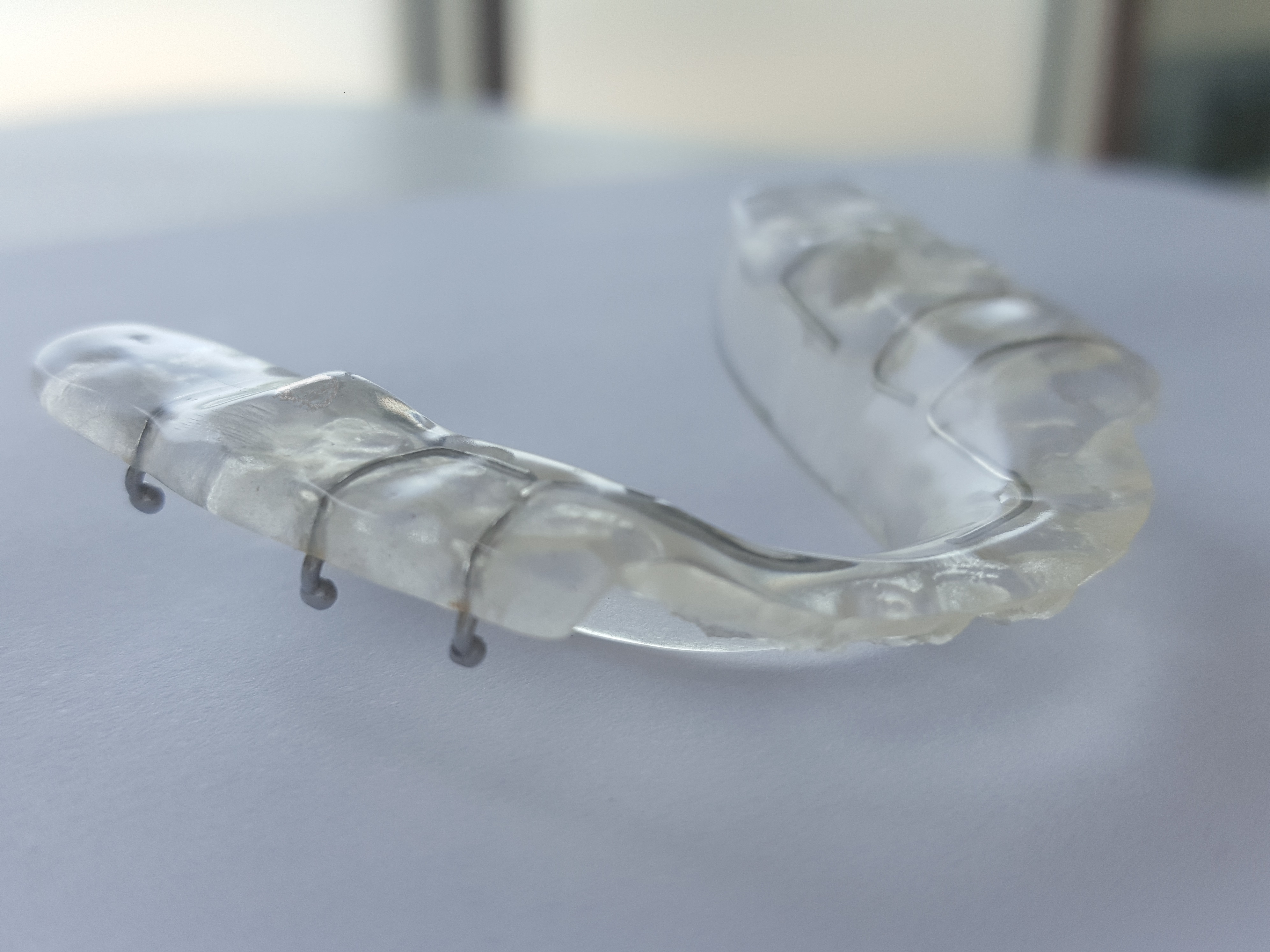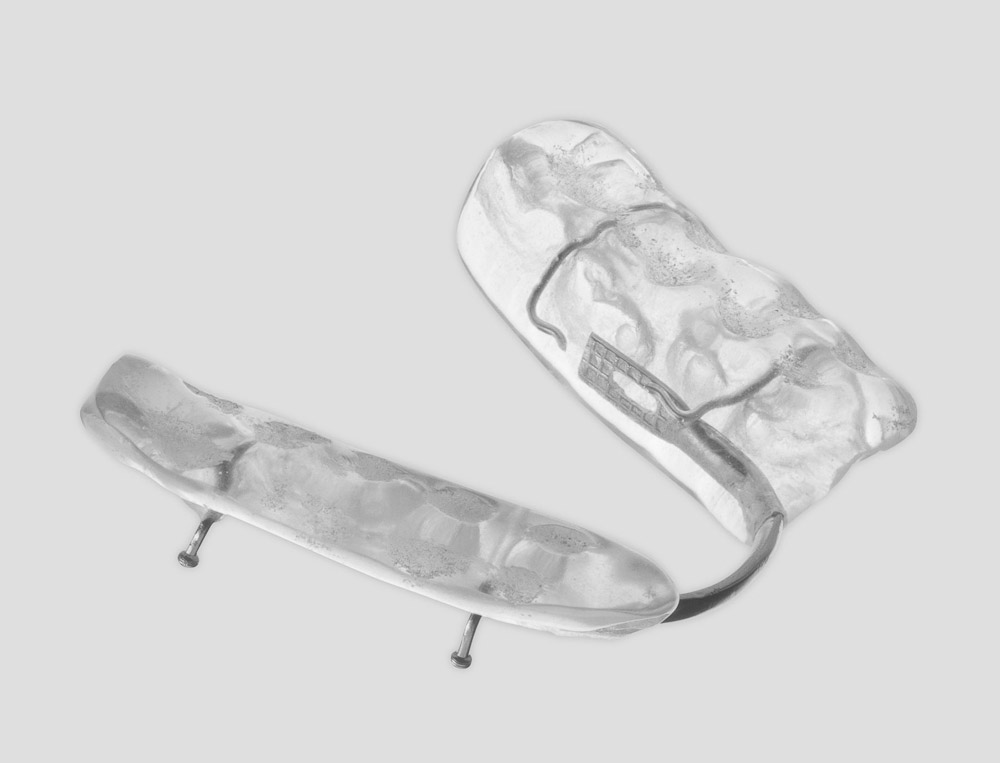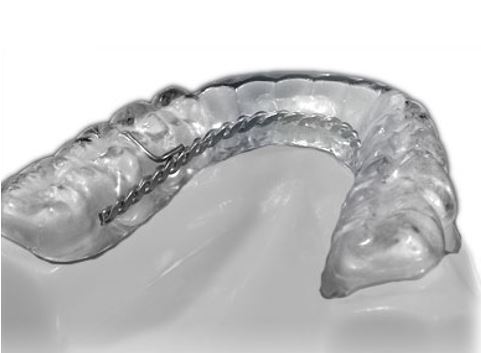This appliance is a combination of several appliance designs with some small modifications. In fact it is a hybrid of the appliances of Dr Harold Gelb, Dr Brendan Stack. This appliance is designed to correct skeletal, muscular, tendon and ligament asymmetries. Therefore, it fulfils the criteria for and orthotic.
The purpose of orthotic therapy is to restore function and reduce symptoms, not to restore all of the injured or degenerative components back to their original dimensions and health. This appliance is produced on the mandible for aesthetics and function. If the patient cannot speak with the appliance in place, it is likely they will not wear the appliance.
This is our compact and labial bow version, OD2. With this appliance you must make it clear to the patient that movement of the lower teeth is possible. If the major connector wire is stretched bent or distorted in anyway the appliance is transformed into an active orthodontic appliance. These versions are best used on patients that understand the consequences or have committed to orthodontics prior to treatment.
Centric tomograms/CBCT are taken to verify condyle position at time of delivery. The only adjustments that should be made to this appliance are to relieve the lingual ridge as the patients range of motion returns to normal (they will have more lateral movement), eliminate protrusive or non-working cuspal interferences. The centric contact should never be altered unless you don’t need that much vertical. Do not change the bite relation as this is done to your supplied bite registration.
Indications for Mandibular Day Positioned Orthotic
Chronic/acute dysfunction of intracapsular origin (disc placement), TM joint inflammation (capsulitis), or skeletal and muscular asymmetry. It can also be used as a positioning stent to correct vertical dimension, rotational, cant and protrusive changes that have occurred due to attrition, restorations, or are of a developmental nature prior to prosthodontic rehabilitation.

When your need to recapture a displaced disc.
READ PROFILE
Mandibular Orthopedic Re-positioning Appliance.
READ PROFILE
Phase 1 Day Orthotic. Worn during all waking hours.
READ PROFILE